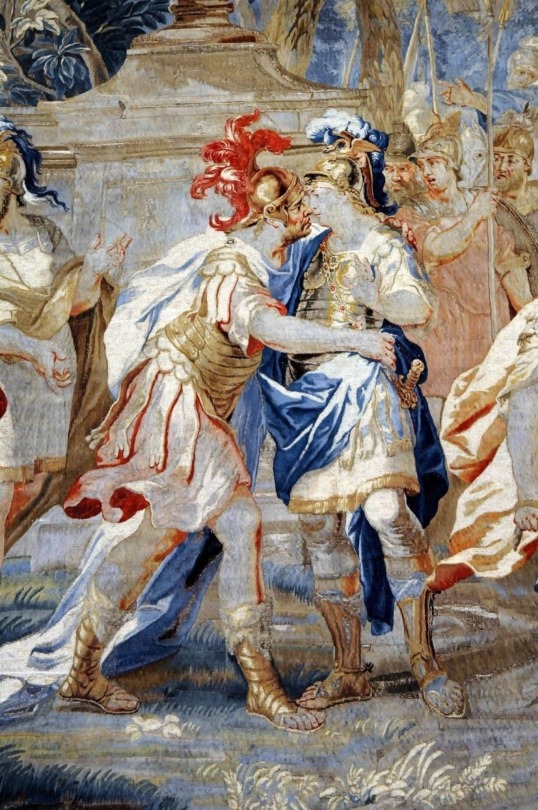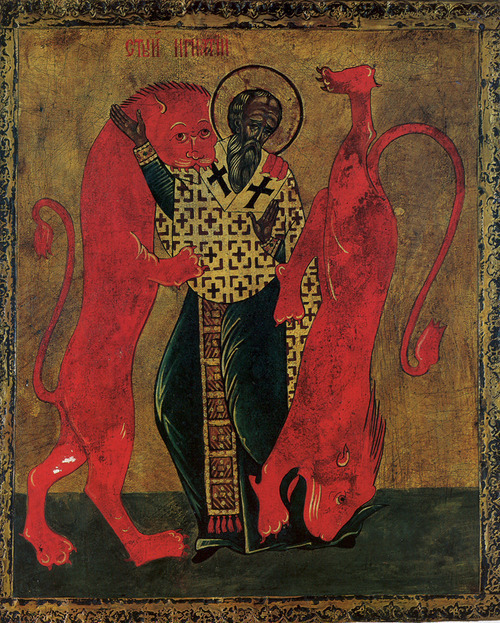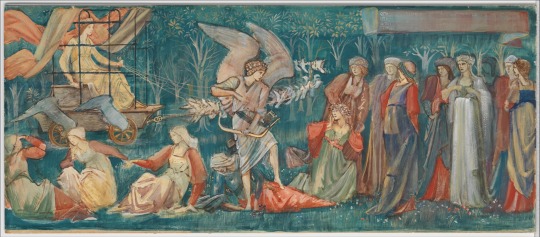#The Tapestry of History
Explore tagged Tumblr posts
Text
The Tapestry of History, 12 – The Rise of the West, 7 – The Reformation, 3
(Image credit – Wikipedia – St. Bartholomew’s Day Massacre, Paris 1572 – by François Dubois) The Protestant Reformation of the 16th Century is one of the pivotal events of Western History, and thereby of World History. The geopolitical state of the world in the 21st Century is, in part, attributable to the consequences of the division of Europe into Roman Catholic and Protestant nation-states…
#Christianity#Church of England#History of the West#Huguenots#John Calvin#King Francis 1 of France#Pope Paul 3#Protestant Reformation#Protestantism#Reformed Church#The Reformation#The Tapestry of History#Wars of religion
0 notes
Text

~ Woven Tapestry, Dolphin.
Date: A.D. 300-499
Place of origin: Egypt
Medium: Wool and linen
#ancient#ancient art#history#museum#archeology#ancient egypt#ancient history#archaeology#egypt#egyptian#egyptology#4th century#5th century#tapestry#woven#woven tapestry#dolphin
672 notes
·
View notes
Text

woven tapestry fragment of wool and linen, egypt c. 300s a.d.
974 notes
·
View notes
Text

Inge & Fritz Vahle, Wandteppich, c. 1965, Hagen, Emil Schumacher Museum. Photo from April 2025.
174 notes
·
View notes
Text
Needle felting is fun !
Here are some mini dolls made with all of my love for Minish Cap 🍀

(My current project under the cut)
A wobbly recreation of the Bayeux tapestry on a plaid made by my mom :

To be more specific, it's the part where the Halley comet is depicted
#my art#needle felting#minish#ezlo#lu four#“tapestry”#history#stencils and correct proportions are for the weak
267 notes
·
View notes
Text
“The Sacrifice of Polyxena”, 17th century Chinese tapestry, part of a series llustrating the story of the Trojan War, made for sale to the Portuguese market. More than a bit chaotic when reduced to internet size, no doubt far more effective in person.

204 notes
·
View notes
Text

Adoration of the Magi, tapestry by Edward Burne-Jones (with details by William Morris and Henry Dearle). Designed 1888, woven 1894. 258 cm (101.1 in) high x 384 cm (151.3 in) wide. Now at Manchester Metropolitan University, Manchester, England, UK.
#Epiphany#Epiphany Sunday#liturgical calendar#Adoration of the Magi#art#art history#tapestry#textiles#textile art#Edward Burne-Jones#William Morris#Henry Dearle#Pre-Raphaelite#Pre-Raphaelite Brotherhood#pre-raphaelisme#Arts and Crafts Movement#religious art#Biblical art#Christian art#Christianity#Gospels#New Testament#Gospel of Matthew#British art#English art#19th century art#Victorian period#Victorian art#Manchester Metropolitan University
327 notes
·
View notes
Text
Archaeologists Identify ‘Lost’ Anglo-Saxon Site Depicted in the Bayeux Tapestry
A team of archaeologists has uncovered evidence that a private home in England may stand on the site of a long-lost residence belonging to Harold Godwinson, the last Anglo-Saxon King of England. Their findings suggest that this location, depicted in the Bayeux Tapestry, was a major centre of power before the Norman Conquest.
186 notes
·
View notes
Text

Alexander the Great kissing Hephaestion
Tapestry at Hampton Court Palace, London.
#alexander the great#hephaestion#tapestry#alexander x hephaestion#art#homoerotic#men in art#male art#gay art#mlm#gay#lgbt#lgbtq#lgbtqia#ancient greece#history#gay history#lgbt history#lgbtq history#hampton court
567 notes
·
View notes
Text

La Bête de la Mer / Tapisserie de l’Apocalypse (Tapestry of the Apocalypse)
Medieval tapestry of the Ignatius of Antioch (Christian saint and martyr)
#art history#art#history#european art#medieval#animals#medieval art#christian art#middle ages#apocolyptic#catholic art#Catholicism#catholic saints#lions#satan#medieval manuscripts#tapestry
1K notes
·
View notes
Text
The Tapestry of History, 11 – The Rise of the West, 6 – The Reformation, 2
(Image – Martin Luther in 1528, painted by Lukas Cranach – Wikipedia) All revolutions and great uprisings begin with a catalyst, something setting off the accumulated explosive energy. When the events burst forth with enough power and impetus, setting off a chain-reaction of social and political consequences which spread themselves widely, revolution may be in the making. On October 31, 1517,…
#95 Theses#History of the West#Indulgences#Martin Luther#Protestant Reformation#Protestantism#Roman Catholic Church#Roman Catholicism#The Tapestry of History#Ulrich Zwingli
0 notes
Text

The Palestinian Phoenix الفينيق الفلسطيني [The Palestinian History Tapestry. Source of image: PHT Design; Embroidery: Jan Chalmers]
#art#design#textile#tapestry#embroidery#the palestinian history tapestry#pht design#jan chalmers#2020s
73 notes
·
View notes
Text

The Passing of Venus, Edward Burne-Jones, 1898, gouache and metallic paint on cardboard. Preliminary study for a tapestry for Morris & Company.
#edward burne jones#burne jones#19th century#19th century art#art#painting#classical art#the metropolitan museum of art#venus#cupid#pre raphaelite#william morris#design#decorative arts#tapestry#study#1800s#art history#pre raphaelite brotherhood#victorian art#gouache#the passing of venus#british art#british painter#english art#chariot#drawing#victorian
56 notes
·
View notes
Text

Sonia Delaunay, Hommage à Tristan Tzara, 1956 (executed in 1967), Kunsthalle Emden. Photo from September 2023.
143 notes
·
View notes
Text

⊹ ࣪ ﹏𓊝﹏𓂁﹏⊹ ࣪ ˖
nobleman on horseback, flowers in hand - source
#artwork#traditional art#medieval#medieval art#art#medieval horses#equestrian#equidae#equine#equines#horse#horse posting#horseblr#horses#horse art#painting#tapestry#history#medieval history#medieval painting
84 notes
·
View notes
Text

March, wool and silk tapestry from a series known as the Months of Lucas that depicts the months of the year. Made by an unknown Flemish artist (the "Master of the Months of Lucas") in Bruges, ca. 1650. Now in the Dayton Art Institute, Dayton, OH, USA.
#art#art history#tapestry#textiles#Northern Renaissance#Flemish Renaissance#Flemish art#17th century#17th century art#Dayton Art Institute
141 notes
·
View notes